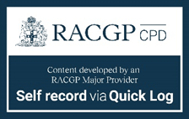Managing common nail conditions
Read more about the most common nail conditions GPs may encounter in the primary care setting and first-line treatment options.
.jpg)
HealthCert Education
Nail health is often underestimated, although nails can reveal important clues about a patient's overall well-being. Understanding common nail diseases can help general practitioners provide better care for their patients.
In this article, we explore some common nail diseases to help you take the first step toward becoming a better-rounded primary care provider.
For further information on this topic, you may be interested to learn more about the HealthCert Professional Diploma program in General Dermatology.
Here are some examples of common conditions of the nail that primary care doctors may encounter in their daily practice:
Fungal nail infections (Onychomycosis)
Fungal nail infections, also known as onychomycosis, are quite common. They usually start with a small white or yellow spot on the nail, which can gradually spread and make the nail thick, discolored, and brittle. Patients may complain of itching or pain.
Doctors can prescribe antifungal medications or recommend over-the-counter treatments like nail creams. Severe cases may require referral to a dermatologist.
Ingrown toenails
Ingrown toenails occur when the edge of a nail grows into the surrounding skin, causing pain, redness, and swelling. It's often seen in the big toe.
Soaking the affected toe in warm water, gently lifting the ingrown edge, and keeping the area clean can provide relief. In some cases, minor surgical procedures may be needed.
Nail psoriasis
Psoriasis can affect the nails, creating small dents or depressions, discoloration, and separation of the nail from the nail bed. It's usually accompanied by skin psoriasis.
Mild cases can be managed with topical steroids or special nail treatments. When symptoms are severe, treatment may require systemic medications and referral to a dermatologist.
Paronychia
Paronychia is an infection that occurs around the nail, causing redness, swelling, and pain. It can be acute or chronic.
Warm soaks and antibiotic ointments will help in most cases. However, pus drainage and oral antibiotics are sometimes necessary.
Beau's lines
Beau's lines are horizontal depressions or ridges across the nails. They can result from illness, injury, or underlying health conditions.
Successful treatment requires addressing the underlying cause.
Nail trauma
Injuries to the nail can cause various problems, from nail bed lacerations to subungual hematoma (blood under the nail). These injuries can be painful and may lead to nail deformities.
Treatment depends on the severity of the injury. Nail bed lacerations may require sutures, while drainage of hematoma can relieve pain.
Usually, common conditions/diseases of the nail can be managed within a primary care setting. However, a referral to a dermatology specialist may be necessary in complex cases. Understanding common nail diseases is an important aspect of general dermatology that doctors can incorporate into their practice. By recognising and managing these conditions, they can enhance the ability to provide comprehensive care to their patients.
– Dr Rosmy De Barros
For further information on this topic, you may be interested to learn more about the HealthCert Professional Diploma program in General Dermatology.
Engaging with this blog can help meet your annual
|

How to claim your CPD hoursIf you consume educational webinars, podcasts, articles, or research on this blog, you can Quick Log CPD hours with the RACGP via the usual self-submission process. You will be asked to reflect on what you have learned, and you will require supporting evidence such as a screenshot.Download the RACGP’s guide to self-recording your CPD here. |
Read another article like this one: How to treat common cutaneous fungal infections
References:
- Leung AKC, Lam JM, Leong KF, Hon KL, Barankin B, Leung AAM, Wong AHC. Onychomycosis: An Updated Review. Recent Pat Inflamm Allergy Drug Discov. 2020;14(1):32-45. doi: 10.2174/1872213X13666191026090713. PMID: 31738146; PMCID: PMC7509699.
- Chabchoub I, Litaiem N. Ingrown Toenails. [Updated 2022 Sep 18]. In: StatPearls [Internet]. Treasure Island (FL): StatPearls Publishing; 2023 Jan-. Available from: https://www.ncbi.nlm.nih.gov/books/NBK546697/
- Hadeler E, Mosca M, Hong J, Brownstone N, Bhutani T, Liao W. Nail Psoriasis: A Review of Effective Therapies and Recommendations for Management. Dermatol Ther (Heidelb). 2021 Jun;11(3):799-831. doi: 10.1007/s13555-021-00523-x. Epub 2021 May 12. PMID: 33978917; PMCID: PMC8163925.
- Dulski A, Edwards CW. Paronychia. [Updated 2023 Aug 7]. In: StatPearls [Internet]. Treasure Island (FL): StatPearls Publishing; 2023 Jan-. Available from: https://www.ncbi.nlm.nih.gov/books/NBK544307/
- Jandial A, Mishra K, Prakash G, Malhotra P. Beau's lines. BMJ Case Rep. 2018 Mar 28;2018:bcr2018224978. doi: 10.1136/bcr-2018-224978. PMID: 29593008; PMCID: PMC5878284.

 1800 867 1390
1800 867 1390-1.jpg)
-1.jpg)
.jpg)



